This is the second article in a series exploring the issues of heathland restoration by deforestation.
Click here to view the first article in the series: Heathland re-creation: it’s time to talk. By Friends of Thetford Forest
The Save Sandlings Forests campaign is co-ordinated by Clive Coles and Imogen Radford. It represents the views and opinions of various forest user groups and individuals who believe that our public forest estate should continue to be managed, as a national asset, by a properly resourced Forestry Commission. We are members of the national Forest Campaigns Network. [Inadvertantly left this paragraph out, sorry! Editor]
www.facebook.com/pages/Save-Our-Sandlings-Forests
Summary
All over England woods and forests are being felled and not being replaced. This is in order to recreate heathland, a man-made landscape which was more widespread 100 years ago when the coverage of woodland had dipped to its lowest point. This deforestation is taking place without consulting or taking account of the wishes of local people, and without proper assessment of the value of the woodland being lost or of the success of the habitats ‘restored’.
Choices of which habitats and species have higher priorities are being made by conservationists who favour heathland over woodland, and implemented by conservation regulators and land owners/land managers who have bought into these choices. If they had their way there would be a faster and more drastic pace of deforestation.
We don’t have easy access to figures or joined up information on what is happening to our woodlands and forests. If the impact of the deforestation was more widely known many of the people who recently showed how much they cared about woods and forests would be horrified.
We need detailed accessible up-to-date information, and we need a balanced and honest approach – consultation, assessment, and planting of at least as much woodland as that which is lost. We already have government policy on how to ‘restore’ open habitats, drawn up by the Forestry Commission after extensive consultation, which if properly applied, together with suitable new planting, would stop damaging deforestation from ripping through our woodlands and forests.
Introduction
Would you want this lovely vista of green and leafy dappled shade to be your local woodland?
Or would you want this bleak landscape of fenced off bracken, bare earth and shattered trees instead?
People who use Sutton Heath woodland in Suffolk are fighting to stop their popular and much used lovely woodland, shown in the first photograph above, being turned into the barren wasteland in the second. The landowner and land managers say they want to turn the woodland on Sutton Heath into purple heather heathland.
But local people know what will happen if they get their way. Many years of ‘heathland restoration’ by the same land managers, Suffolk Coastal District Council assisted by Suffolk Wildlife Trust, has resulted in the landscape you see in photos 2 and 4, taken in a part of Sutton Heath deforested 12 years ago.
This is just one example of woodland being deforested, but it is happening throughout the country
(1). I use the term ‘deforestation’ because that is what is happening, though others talk about ‘restoring heathland’ or ‘re-creating open habitat’.
“ ‘Deforestation’ is the direct human-induced conversion of forested land to non-forested land.”
Definition in the Kyoto protocol on climate change (2)
What is happening?
The first local people knew about the intention to fell the woodland at Sutton Heath was when the trees started being cut down. Their protests eventually forced the council to start consulting them, even though a council officer said that the council as landowner was “not required to consult the public on the management of its property” (3). Now they have got the council to agree to delay further felling for two years and to promise to concentrate on doing a better job on the already deforested area before further felling of woodland to create more heathland (4).
Those managing Sutton Heath say that they want to restore it to how it was in 1905 (incidentally a point at which the woodland in this country was at its lowest ebb). But when the area was notified as an SSSI in 1955 and registered in 1987 a large part of the area was woodland as the citation makes it clear (5):
“There are large areas of semi-natural woodland most of which has originated from selfset Scots pine, birch and some oak. Most of this is less than 60 years old. Heathland elements can be found beneath the younger stands. There are also small areas of broadleaved high forest composed chiefly of oak, birch, sweet chestnut, sycamore and beech.”
[my emphasis]
Some of this woodland and forest has already been destroyed, and the Sutton Heath Users Group realise they’re not going to get that back. All they are asking for is there to be no further deforestation, and for a balance between woodland and heath to ensure the area benefits people and wildlife (6).
Parts of Sutton Heath already deforested are covered in a blanket of 5 feet tall Bracken [photo 4], with virtually no heather to be seen, however you wouldn’t know this from the report of the assessment by Natural England of the SSSI in August 2010 (7):
“Unfavourable recovering. This site is undergoing a tree clearance programme at the current time and the area that has already been clear felled is showing signs of recovery with heather re-establishment. An area towards the north (the bottom part) of the site is being grazed by hebridean sheep owned by the Suffolk Wildlife Trust. Heather has been cut (in one block) in some areas to create a diversity in the structure of the vegetation (allow natural regeneration). The current management is successfully improving the biodiversity of the site.”
There doesn’t seem to be satisfactory assessment of the success of restoration of heathland after it is carried out, in terms of whether heather is established and whether the wildlife associated with it appears or increases, despite requirements in the Forestry Commission’s open habitat policy ‘When to convert woods and forests to open habitat in England: Government policy’ (FCOH) (8).
So far there has been no requirement on the land owners of Sutton Heath to carry out an environmental impact assessment on areas they intend to deforest, despite bats and other wildlife being present in the woodland (9), and no assessment was carried out in neighbouring areas before they were deforested. Anecdotal evidence is that the next-door Upper Hollesley Heath had Dartford warblers before the woodland and gorse was removed, but as soon as the felling started they disappeared and have never returned. Because no proper assessment was done we will never know exactly what was lost, and unless one is done before further felling we won’t know what will be lost.
Why is it happening?
Conservation policy is governed by a plethora of targets and legislation which could be designed to baffle campaigners wanting to save their local woodland from destruction. There are sites of special scientific interest (SSSIs), special protection areas (SPAs), and several other designations for protected land. Organisations involved include Natural England and the Joint Nature Conservation Committee. Key legislation and policies include Wildlife and Countryside Act (1981), Countryside & Rights of Way Act (2000) the Natural Environment and Rural Communities Act (2006), and the UK Biodiversity Action Plan (UKBAP) priorities (1994).
The future of some of our woods and forests depends on choices made by land owners, land managers and those that regulate what they do, so it is important to try and understand some of this complex picture. Taking some of these elements and looking at Sutton Heath illustrates how conservation protection machinery is not straightforward when it comes to woodland.
On closer examination SSSIs are not straightforward protection of habitat as you might assume, and certainly not of woodland. Sutton Heath was first designated in 1955 and then subsequently re-designated in 1987. Two thirds of the area was wooded, mostly with trees that had self sown over 5 or 6 decades together with some older broadleaf woodland, and the remaining one third heathland. But the whole area was described as lowland heath. It is not clear why this happened, but perhaps it was the preference of those carrying out the re-designation in 1987. When conservation areas were listed in relation to 27 UKBAP broad habitats in the 1990s those that contained a variety of habitat were crudely fitted into just one of these broad habitats. So an area like Sutton Heath with two thirds woodland cover, even if it was semi-natural, is designated as dwarf shrub heath.
Common Standards Monitoring guidance gives the criteria for evaluating condition on SSSIs based on the broad habitats. In that guidance a unit that is designated for dwarf shrub heath has an upper limit placed on the coverage of scattered trees – it varies depending on the type of heath but is usually less than 15%. This is irrespective of the coverage of trees when the site was designated and takes no account of the value of that woodland.
Natural England give guidance to land owners and managers of SSSIs on achieving favourable condition in compliance with Common Standards Monitoring and have an enforcement role that can result in fines and ultimately compulsory purchase (10). Land owners say they are obliged to follow the legislation and often rigidly carry out guidance by removing trees to meet the 15% target.
Any land owner or manager who wants to cut down woodland has to apply for a felling licence from the Forestry Commission. If they’re not intending to replant it (in which case they need an unconditional felling licence), there should be a process of assessment and decision-making including an Environmental Impact Assessment (11), something that was not carried out at Sutton Heath. If the woodland is on protected land such as an SSSI (as Sutton Heath is) then Natural England will have a say.
There is a 28 day consultation on felling licences, but those interested have to know or be told about this, which doesn’t always happen. Forestry Commission (FC) open habitats policy requires that local people should be consulted and involved (12) and FC provide advice on engaging the public (13). There is guidance for local councils on good practice and legal duties to engage people (14) but as at Sutton Heath, this often doesn’t happen in practice unless people get organised and make a fuss.
Will we see more deforestation?
Within the Public Forest Estate (PFE) Forest Design plans identify a further 12,415ha of open habitat to be restored over the next 20 years. This includes 578 ha in East Anglia. But the potential within PFE, according to FC evidence prepared as part of the consultation in developing their open habitat policy, is for a further 36,958ha of freehold plantation and woodland that could be restored to open habitat. Of this nearly half (13,678ha) is in East Anglia (15).
Suffolk and Norfolk contain large areas of public forest estate planted since the First and Second World Wars, particularly on areas that were previously heathland that had been exhausted and left barren by agriculture.
We suspect that these forests are in the sights of those making choices and pronouncements about which landscape habitat is conserved.
We campaigned in the Sandlings forests against the sell-off or transfer of public forests to unaccountable charities because we suspected that in our area those charities were keen to get hold of our forests in order to deforest. We’d seen the Suffolk Wildlife Trust already doing so on land they own or manage and we know that RSPB and others strongly favour that approach, and we feared the loss of multipurpose forest and access – so important in an area where areas for recreation are in short supply.
We now know that our fears were grounded in reality. Thanks to the Our Forests freedom of information request we discover that at the height of the controversy the Wildlife Trusts did express an interest in taking on some of the forests, rather than joining with campaigners to argue against the ill thought out and discredited disposal plans (16).
The RSPB have spoken about the need to double the area of heathland in England, mostly by wholesale removal of plantation forests (17,18).
Others have spoken about wanting a faster pace of ‘heathland restoration’, for example the response from Plantlife (20) to FC’s open habitat consultation 2010 (19).
Our Forests described in their recently published vision document (21) their aspiration:
“By 2050, England’s precious heathland habitats have been cleared of inappropriate plantations and returned to their former purple glory.”
It’s not clear whether they realised that would put paid to most of the forests in East Anglia which we campaigned to save from being sold off, nor whether they realise the implications for biodiversity that depends on these forests, the environmental and climate change implications, or the economic and social impact of such a drastic deforestation at a pace far outstripping the fastest option in the consultation to develop the FC open habitat policy (22).
The Forestry Panel discussion on open habitat restoration in their 18 January meeting (23) emphasised the need for progress in carrying out FCOH policy in PFE and private forests. Importantly, though, the panel picked up on the need to improve information available nationally on operation of the open habitat policy.
There is some information on deforestation in total, as every country is required to provide this under the Kyoto protocol on climate change (24), but there isn’t readily available information on how much woodland across the country is being deforested to create heathland.
Deforestation: is this what we want for our woodlands?
We know from the recent campaign against the sell-off of forests and from surveys such as the detailed consultation done in 2009 (25) that people highly value forests for their social, economic and environmental benefits, they want more forests and woodland, and they want them to be more accessible to them where they live. When their local forest is threatened, people are upset and campaign to save it if they can. If everyone who spoke out in defence of forests was aware of what was going on around the country they would be horrified.
It is time to get a grip on unthinking acceptance of the priorities and choices of the conservationists and the headlong rush to deforest they are pursuing and implementing.
It’s time to challenge the absurdity of all of us agreeing on the importance of planting more trees and creating more woods and forests – the government’s Big Tree Plant, the Woodland Trust’s Jubilee Woods project, the call by the forestry panel’ s chair the Bishop of Liverpool for planting of woodlands (26,27,28) – while at the same time cutting down and not replacing woods and forests all over the country.
We need to be fully aware of the irony of putting billions of pounds into international campaigns to stop deforestation (29), while at the same time spending millions in grants to land owners and managers to deforest our own country. Overall figures on grants are difficult to gather, but we know, for example, that Suffolk Wildlife Trust received €889,316 million in European farm subsidy grants 1999-2009 (30) and that Suffolk Coastal District Council has recently entered into a Higher Level Stewardship agri-environment scheme on Sutton Heath for £133,889 (31,32).
It is unfair that at the same time FC (which is not eligible for any grants) has to bear the total cost of managing some of the heathland restoration and the lost revenue (33). And it is even more illogical that the government is paring down the paltry £20 million a year it contributes to FC to run the massive PFE.
Is there a better way?
The experience at Dunwich Forest in Suffolk provides a contrast to Sutton Heath. Here the Forestry Commission in cooperation with other local organisations is converting some of its forest to heathland as part of a coherent plan. Local people and stakeholders have been consulted through the FC’s forest design plan process, and the process is being carried out gradually and sensitively (34). This is a very different area to the very popular amenity woodland at Sutton Heath. Dunwich Forest is next to nature reserves including the RSPB’s famous Minsmere reserve and is much further from local urban centres and less heavily used for recreation. Here a balanced and more appropriate approach is being taken, based on the principles in FCOH (35):
• the right tree in the right place;
• the right habitat in the right place; and
• the right change at the right pace.
Detailed government policy, ‘When to convert woods and forests to open habitat in England: Government policy’ (36), drawn up after extensive consultation, outlines a balanced and effective approach to considering converting woodland to heathland.
We should consider whether there is value in recreating heathland – in each case and in the broader context – rather than unquestioningly assuming that it always a good thing.
If it is in the interests of biodiversity to remove some trees, woodland and forest to create different habitats then we already have a framework in the FC open habitat policy document, which if applied properly could ensure this is done in a way that enable us to continue to enjoy the whole range of public benefits that woods and forests provide. Before allowing deforestation there must be genuine consultation, genuine assessment, and genuine replacement planting — that is planting that would be of use to those losing their woodland: it’s no use to those losing their local woodland in Suffolk to know that new woodland is being planted in the Midlands.
The choices of one strand of opinion on what is the best use of our woodlands and forests, and on what trees and habitats should be in what places and about the pace of any change, should not be imposed on us all.
by Save Sandlings Forests campaign
References
1) http://www.self-willed-land.org.uk/heath_madness.htm
2) http://unfccc.int/resource/docs/cop7/13a01.pdf#page=54; http://unfccc.int/kyoto_protocol/items/2830.php
3) EIR432 full response at http://www.whatdotheyknow.com/request/information_relating_to_the_dest
4) http://www.facebook.com/pages/Save-Sutton-Heath-Woodland/184966498245308
5) http://www.sssi.naturalengland.org.uk/Special/sssi/sssi_details.cfm?sssi_id=1001701
6) http://www.suttonheathusersgroup.co.uk/
8) FCOH: http://www.forestry.gov.uk/pdf/eng-oh-policy-march2010.pdf/$FILE/eng-oh-policy-march2010.pdf
10) http://www.naturalengland.org.uk/information_for/sssi_owners_and_occupiers/default.aspx
11) http://www.forestry.gov.uk/england-eia
12) FCOH, http://www.forestry.gov.uk/pdf/eng-oh-policy-march2010.pdf/$FILE/eng-oh-policy-march2010.pdf
14) http://www.idea.gov.uk/idk/core/page.do?pageId=7816307; http://www.idea.gov.uk/idk/core/page.do?pageId=15391881
16) http://saveourwoods.co.uk/our-forests/finally-defra-responds-to-our-forests-foi-submission/
17) http://www.rspb.org.uk/Images/Futurescapes_report_tcm9-132694.pdf
18) http://www.forestry.gov.uk/pdf/eng-oh-rspb-response-050609.pdf/$FILE/eng-oh-rspb-response-050609.pdf
20) http://www.forestry.gov.uk/forestry/INFD-7QUGK4
21) http://saveourwoods.co.uk/wp-content/uploads/2012/01/Our_forests_vision_low_res.pdf
22) http://www.forestry.gov.uk/pdf/eng-open-habs-consultation.pdf/$FILE/eng-open-habs-consultation.pdf
23) http://www.defra.gov.uk/forestrypanel/files/SummaryNote18January.pdf
24) UK NIR 2011, figure 11.4, http://unfccc.int/national_reports/annex_i_ghg_inventories/national_inventories_submissions/items/5270.php
25) http://www.forestry.gov.uk/forestry/infd-7yxk2h
26) http://www.defra.gov.uk/bigtreeplant/
27) http://www.woodlandtrust.org.uk/en/jubilee-woods/about/Pages/our-aims.aspx
29) http://www.defra.gov.uk/news/2011/12/04/uk-pledges-10million-to-reduce-deforestation-in-brazil/
30) http://farmsubsidy.org/GB/recipient/GB257946/suffolk-wildlife-trust/
31) http://www.self-willed-land.org.uk/articles/rare_precious.htm
32) http://www.whatdotheyknow.com/request/information_relating_to_the_dest?unfold=1
33) http://www.forestry.gov.uk/pdf/eng-open-habs-evidence.pdf/$FILE/eng-open-habs-evidence.pdf
35) FCOH: http://www.forestry.gov.uk/pdf/eng-oh-policy-march2010.pdf/$FILE/eng-oh-policy-march2010.pdf
36) FCOH: http://www.forestry.gov.uk/pdf/eng-oh-policy-march2010.pdf/$FILE/eng-oh-policy-march2010.pdf
37) Save Sandlings Forests campaign www.savesandlingsforest.co.uk; http://www.facebook.com/pages/Save-Our-Sandlings-Forests/180924598610817

















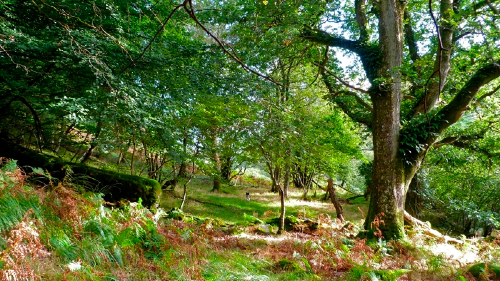
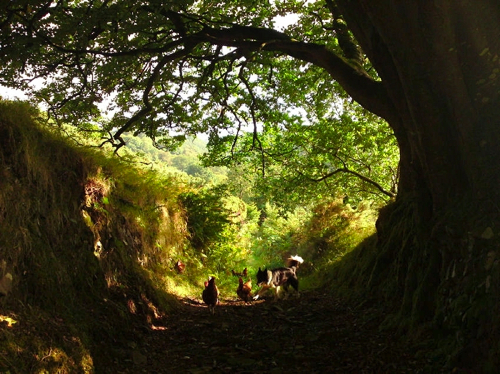
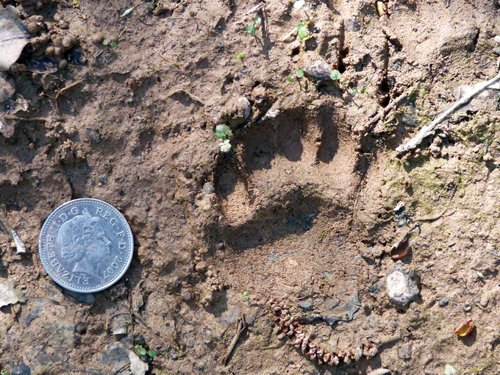


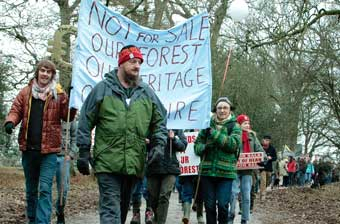

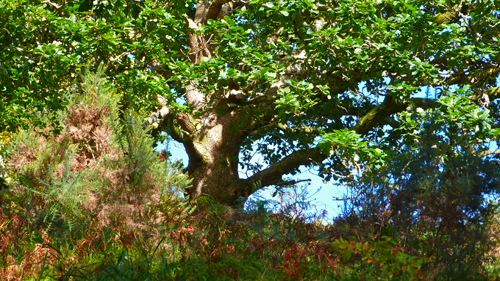

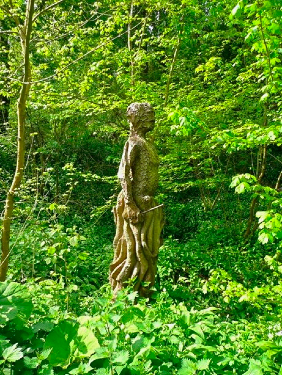
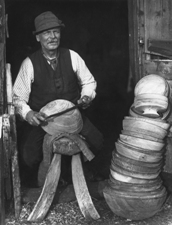



This article by Dr Mark Fisher, http://www.self-willed-land.org.uk/articles/noosphere.htm, tackles the way that conservationists bend reality to their own ends, and asks: Is grazing giving heath back to nature?
Grazing doesn’t even work in meeting those ends, and it is certainly questionable whether it returns land to nature.
The article examines the Dunwich ‘re-wilding’ project (in the text to which footnotes 33-36 refer), from the differing viewpoints of those involved.
The Dunwich project is referred to in my article above (text to which footnote 34 refers) as a deforestation which is being done more gradually with more consultation and in a more appropriate setting than the Sutton Heath example used throughout the article and in numerous other cases across the country.
Read more: http://www.self-willed-land.org.uk/articles/noosphere.htm
I think debates on land use and land use change would be considerably improved if commentators declared their interests and exactly for who and what they are campaigning. For example, a public service union employee whose members’ interest is to retain their jobs, pay rates and pension benefits should make this clear when encouraging a particular stance on conservation, land use or land use change.
I work for a commercial forest asset management company. We strive for true sustainability including economic sustainability – something, by the way that restored heathland is never going to have.
You are absolutely right, Steele, heathland is clearly unsustainable. It requires machinery, chemicals, animals, time and effort and money to attempt to keep it as heathland, and it seems to require fencing that keeps the public out, or at least restrict their ability to walk freely, walk their dogs, ride horses or cycle or do orienteering, or even to just enjoy the beauty of the land. It costs money – all of these things cost money, and there’s also the cost of no longer having trees to harvest. In addition to the financial cost, there’s an impact on the environment by losing the climate change mitigation function of trees.
By contrast, forests and woodlands can be sustainable, and many are – both public and private. Our campaign is particularly focused on Forestry Commission forests, as it was established to campaign against the selling off of the public forests in the Sandlings area (which are all FC forests), and we believe that the Forestry Commission does a fantastic job of combining economic, social and environmental aspects of managing the forests to the benefit of us all, which is by definition sustainable (as well as being the internationally recognised definition to meet FSC and UKWAS standards of sustainable forestry (http://www.fsc-uk.org; http://ukwas.org.uk). An important impetus to establish our campaign against the selling off or disposal of these forests was our fear that if they were given or sold to the charities that are active in our area then they would step up their deforestation plans, to the detriment of the economic, environmental and social benefits of the forests, including restricting access and narrowing the purpose of those forests.
I agree it is important to know where an article is coming from. There was an inadvertant error in leaving out the paragraph about our campaign. This now appears at the top of the article:
The Save Sandlings Forests campaign is co-ordinated by Clive Coles and Imogen Radford. It represents the views and opinions of various forest user groups and individuals who believe that our public forest estate should continue to be managed, as a national asset, by a properly resourced Forestry Commission. We are members of the national Forest Campaigns Network. http://savesandlingsforest.co.uk/ ; http://www.facebook.com/pages/Save-Our-Sandlings-Forests/180924598610817
As I said above, we established the campaign in response to a threat to our forests. We are particularly concerned about access for the whole range of forest users – particularly important in an area where accessible countryside is in very short supply. However, we believe that it isn’t possible to look only at access – it is bound up inextricably with all the other factors in managing forests, including deforestation and access restrictions, how they are run and who runs them, and the funding that is available to run them and provide the facilities which many users enjoy. Many forest users think more widely about the forests – appreciating their wildlife, their beauty, their contribution to mitigating climate change — not just seeing them as a playground, and we aim to reflect that.
I wrote this article on behalf of the Save Sandlings Forests campaign, and I hope I’ve been able to explain what that campaign is about.
I work for the biggest union representing staff who work for the Forestry Commission. My work for the union in supporting the campaign against the wholesale privatisation of the Forestry Commission in 1993 introduced me to the wonderful variety of its forests throughout the UK and to the passion of the staff that work there. Then and ever since I have been impressed by their dedication to their work and by their commitment to multipurpose forestry: to making sure their forests provide an economic benefit to the nation and benefits to the environment while at the same time enabling people to enjoy those forests.
I am one of those forest users who enjoys walking, cycling and visiting forests and woodlands throughout the country, but particularly in East Anglia where I grew up and spent most time now. If you want to know more about my involvement and views on woods and forests, feel free to read my personal submission to the forestry panel last summer:
http://www.facebook.com/notes/imogen-radford/my-personal-response-to-the-forestry-panel/225294400847232
Steele is of course right that restored heathland is never going to have economic sustainability. It will always be a drain on the public purse, and to which public assent hasn’t been invited.
It should be noted that Steele is a Director of Aitchesse Limited, a company based in Perth, Scotland, and whose website only has one page, mostly of contact details and little else -http://www.aitchesse.co.uk/
Steele also left a comment last December on Gabriel Hemery’s blog, and where he did not declare his interest in Aitchesse, but then that didn’t stop me from considering his opinion.
http://gabrielhemery.com/2011/12/08/our-forests-press-statement-re-independent-panel-on-forestry-progress-report/
I have written about Sutton Heath on my advocacy website, based on information that Imogen and others who live in the area have provided me. Local knowledge is always very important for me in pursuing the truth of situations, especially when Sutton Heath is but one part of the wider Sandlings heaths and forests area. http://www.self-willed-land.org.uk
What Imogen does during the working week is of little relevance or interest to me.
I declare my interest as being for wild nature.
In the words of Henry Thoreau from his talk on “walking” in 1851:
“I wish to speak a word for Nature, for absolute freedom and wildness, as contrasted with a freedom and culture merely civil, –to regard man as an inhabitant, or a part and parcel of Nature, rather than a member of society. I wish to make an extreme statement, if so I may make an emphatic one, for there are enough champions of civilization”
Imogen, thanks for excellent bit of clarification.
I think society (and we all) needs to be very careful about ‘wilders’ and ‘wilding’. There are no ‘wild’ places in the British Isles – there are areas where the infuence of human beings is less obvious. By commission or omission everywhere has been touched and most land is managed in some way. The consequence of that is that the natural balances have been peranently shifted and generally have to have management input to achieve any particular state. ‘Wilding’ is as much a managed state in the British Isles as any other – more trendy and fashionable perhaps but no less artificial – and in the timescale of say 3 or 4 oak rotations, not any more likely to be ‘right’.
Fashions and trendiness in land use management tend to move on about every 50 or so years – and yet most people not involved in active woodland and forest management see woodlands as static entities that should not change. In my opinion, good forest and woodland managers should be very wary of fashions and trendiness – and they see woodland as dynamic entities – they have got their heads round the fact that the principal dynamic cycle is longer than a human life (and can therefore appear static unless you are looking properly).
‘Wilders’ trying to ‘wild’ in managed environments can run into problems: if moor land ponies are used to graze ‘wilded’ woodland/heath areas (to maintain semi open aspect) should they be attended by a very non wild vet. Some ‘wilders’ argue that they should not; the law says neglect of an animal is cruelty and illegal. Deer numbers are a problem in lowland England; they are not in the beech spruce forests of Romania. The difference is that forests in Romania have deer but also bears, lynx and wolves – deer problem generally solved. I can’t see wild brown bears going down well in Sussex.
On the question of fashion and trendiness, I think the Forestry Commission has become something of a fashion victim. Following whatever is the latest push from articulate middle class campaigns and twitter blizzards may not be good long term stewardship of the forests.
The real shame, in my opinion, is that much of the quiet, considered thought by FC foresters on the ground that I come across is very sound and deeply concerned for the long term sustainability of the forests in their ‘patch’. They disagree with a lot that they are required to do (or not to do) and yearn for more authority to manage the forests properly – even if this doesn’t fit in with the ‘Country Living’ view of how things should be.
Oh dear, Steele, you do have this tendency to categorical pronouncements! You receive your information from such very limited sources if you think that the Dutch system of Nature Development has anything to do with wild land.
Perhaps I should also have declared that I am a Research Associate at the Wildland Research institute of Leeds University, and that I was principal author of a Review of status and conservation of wild land in Europe, commissioned by the Scottish Government http://www.scotland.gov.uk/Resource/Doc/1051/0109251.pdf
I wouldn’t even know how to twit, or whatever it is!
Just to confirm your perception of me I’ll go for another categorical pronouncement: researchers are people who open mindedly seek after greater understanding and better information. People who start with a preformed view of the way things should be and then gather and promulgate such information that agrees with that view and reject anything that doesn’t are campaigners. I have no problem with campaigners – unless they call themselves researchers. Where would you put Dr Mark Fisher?
And for the record I have absolutely no idea what the Dutch system of Nature Development is: nor I have knowingly ever cited it.
It’s all about replacing the jobs lost through de-industrialisation of the UK
This is why we have the upsurge of so-called nature conservation. The UK gdp is 77% and rising in service industries. Just a couple of decades or so we where 85% industrial.
It really is a waste of time discussing policy, when really it is all about the state desperatly trying to employ people at whatever cost.
If they could employ a million people painting the beaches white constantly and get away with it, they would.
The funding is supposed to be for preserving indiginous species, in their natural habitats, in their natural places’s. The rio accord (agenda 21) is being deliberatly being misread in every way to secure more and more funding. That is why we have had our commons mis-appropriated by local authorities, to facilitate the appaling wildelife trusts to get up to their febrile activites.
I’m suprised nobody has clocked the puirpose of the cattle. Yes, they are a wast of time, yes their usefullness is an invention, but……… Their presence allows for the ticking of more boxes for funding under the
‘sustainable farming’ ticket.
The more time you all spend arguing the toos about policy, the more you are falling into un-natural englands game plan.
To kill the beast, you have to attack the heart of the problem. Not the policy but the real reasons for it.
PS, the money from the EU start’s it’s life from this country. You are paying for all of this rubbish.